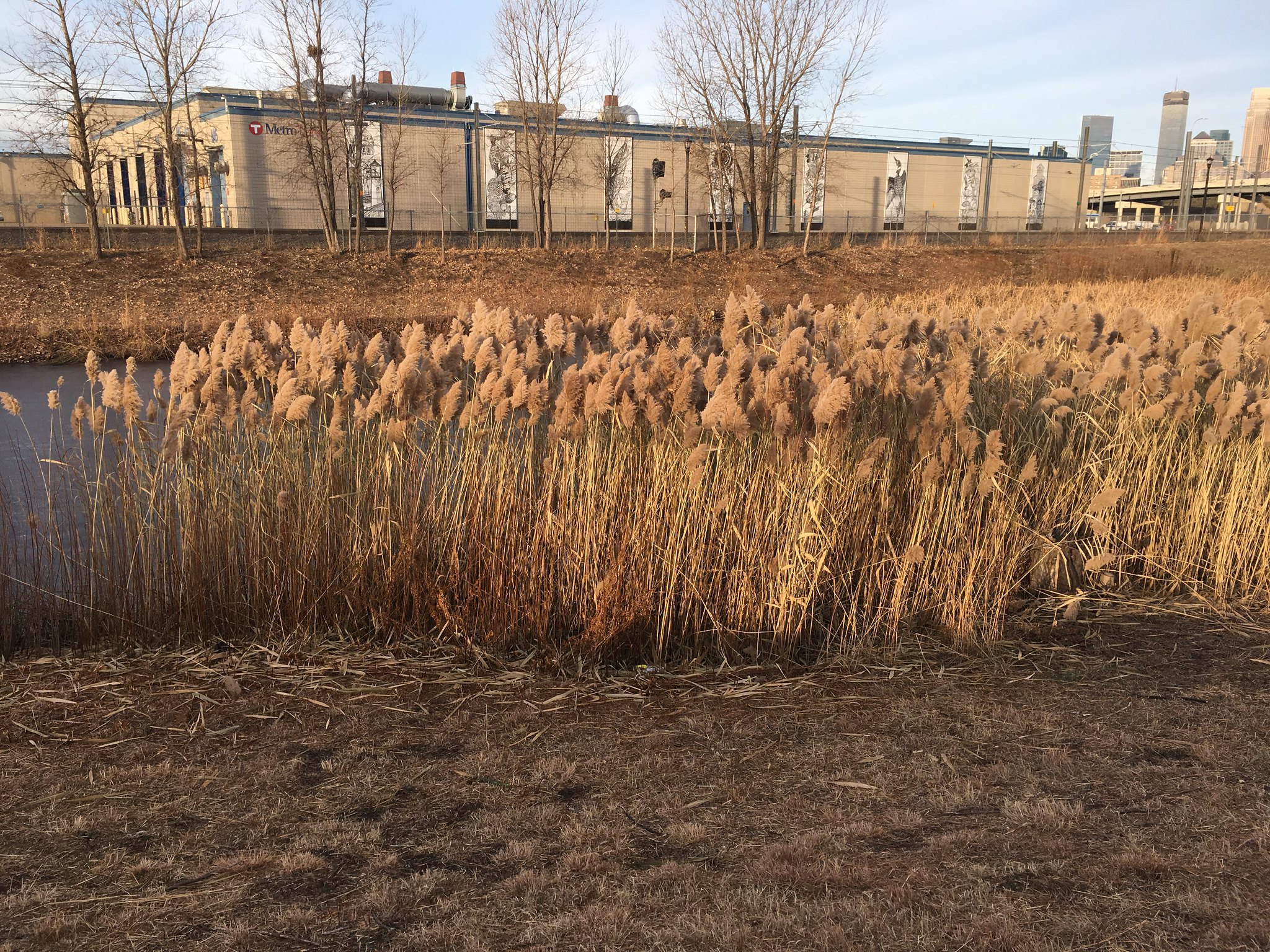
Invasion by non-native Phragmites appears to be accelerating in Minnesota, though no systematic efforts to understand distribution or implement control efforts have been conducted. The risk that Phragmites will spread rapidly and be difficult to control in Minnesota likely depends on whether multiple genetic strains are present, overcoming the barrier to seed production, and whether seed has the opportunity to ripen given the length of the growing season. This project will map invasive Phragmites statewide, assess its reproductive potential, and develop management protocols for responding to different invasion scenarios.
To address this, a collaborative network will help collect data on invasive Phragmites presence in Minnesota. Tissue samples will be collected and analyzed by partners at the Chicago Botanic Garden to genetically confirm non-native status (Minnesota still boasts high abundance of native Phragmites, unlike regions along the Atlantic coast where the native subspecies has been almost entirely displaced). Researchers will identify whether it is sexually reproductive by collecting seeds and conducting seed viability tests. Knowing whether it can spread by seed (sexually) or just clonally is important; once viable seeds start spreading by wind and water, eradication and control is much more difficult and expensive. Researchers will also look for patterns that indicate climate or temperature sensitivity that may be limiting seed production.
Researchers will create response plans to help AIS managers, agencies, and other entities respond to different Phragmites invasion scenarios. These will be customized based on the age and size of the invasion, how it’s reproducing, and where it is located in relation to sensitive ecological resources – for example, responses to an invasion in a large wetland complex, wild rice waters, or a drainage ditch will vary.
Think you might have seen a population of invasive Phragmites? Check out this identification guide to learn how to differentiate it from native Phragmites.
Phragmites is a highly invasive wetland grass that can have strong negative impacts on biological diversity, wildlife, habitat quality, and recreation. In Minnesota, it is a cryptic invasion because native Phragmites is present as well.
Progress:
In 2017 and 2018, volunteer observers assisted with searching for populations of invasive Phragmites across Minnesota. This resulted in reports of nearly 400 populations in 38 counties. Morphological and genetic analyses were used to confirm the identification of the samples, and over 200 were found to be invasive. More than 100 of these populations are closely geographically associated with rural wastewater treatment plants permitted to use Phragmites in their dewatering basins.
New management recommendations were released in summer 2018.
Researchers are also assessing seed viability to understand the risk for potential future spread. Most of the populations tested produced viable seed. There was a significant effect of latitude, with populations further south having greater reproductive potential. This work is being done over two field seasons in order to increase the robustness of results, showing whether the patterns initially observed are consistent year to year. Leaf tissue was collected in late summer 2018 to assess their genetic structure and diversity, which has important implications for sexual reproduction potential.
Next, researchers will be releasing an assessment of capacity and needs for a strategic response to invasive Phragmites. It will include regional information about Phragmites invasion statuses; opportunities for coordination between local, regional, and state entities; funding sources; control approaches and cost estimation; and training needs.
Final outcomes:
We mapped the distribution of invasive Phragmites, investigated its spread potential, and developed strategies for coordinated response in collaboration with agency staff and other resource managers. We engaged professionals and citizen scientists in reporting suspected populations; conducted intensive search efforts in under-sampled regions; and revisited unverified reports from a web-based invasive species reporting system. Over 70 active observers helped us identify 435 invasive Phragmites populations statewide, and we showed that non-experts can reliably distinguish invasive from native Phragmites using an identification guide we developed. The value of this “crowdsourcing” approach to surveillance is reflected in most invasive stands we identified being small populations (90% are <0.25 acres), for which effective control is much more feasible. Invasive Phragmites is producing viable seed in Minnesota, which increases spread risk; however, the extent of seed production varies across populations, and there is still time to prevent further spread through sound, sustained control efforts. We are working closely with diverse stakeholders to support coordinated response efforts. Our work has also brought state agencies together to address crosscutting issues related to invasive Phragmites’ regulatory status, including its use in some wastewater treatment facilities in “reed beds” for removing water from biosolids. We recently published an action plan outlining how Phragmites spread could be stopped and reversed in Minnesota; this assessment includes management recommendations, cost estimates, and region-specific response guidance. Our findings reveal a window of opportunity to slow and reverse spread of invasive Phragmites, which would benefit Minnesotans by protecting vital natural resources. This approach to statewide surveillance, and framework for a coordinated, landscape-scale response, are strategies that could be applied to other invasive species issues in Minnesota.
